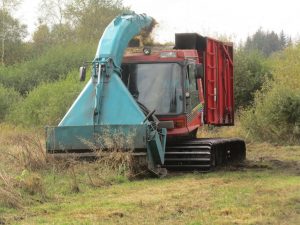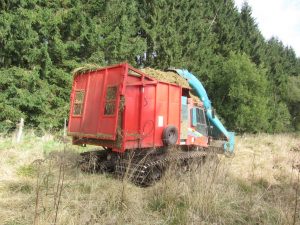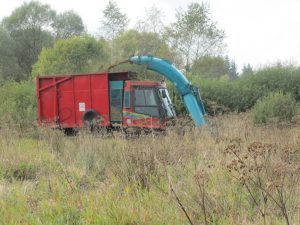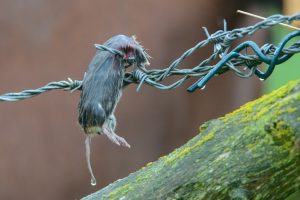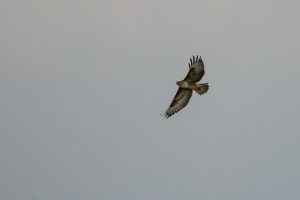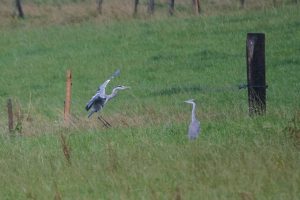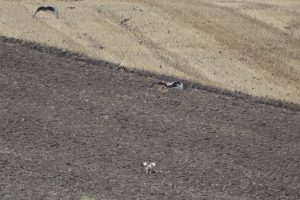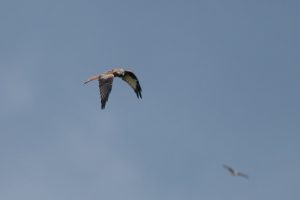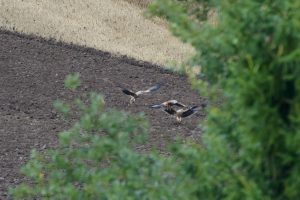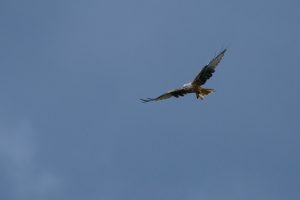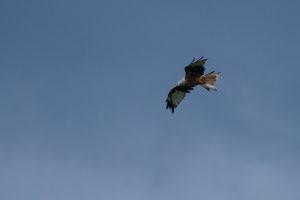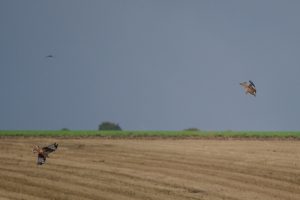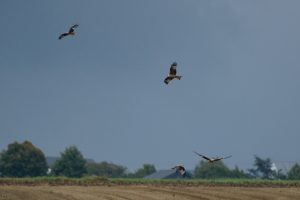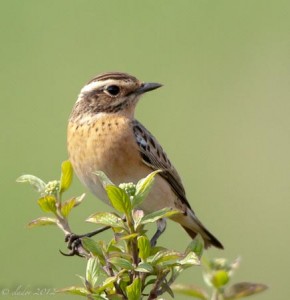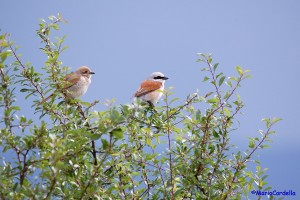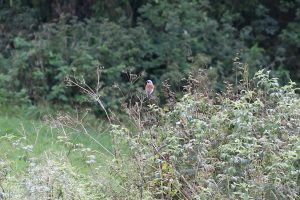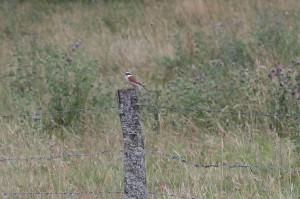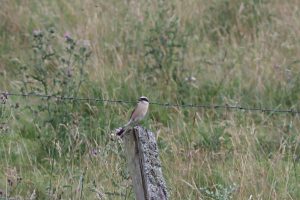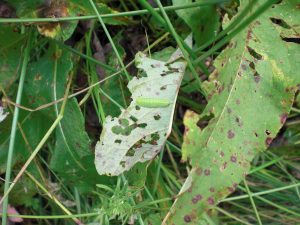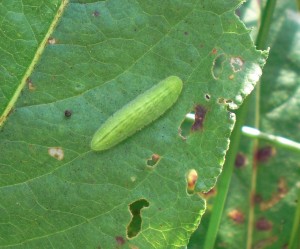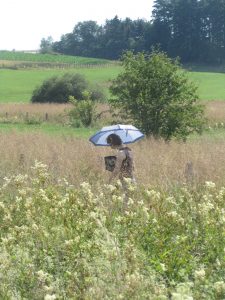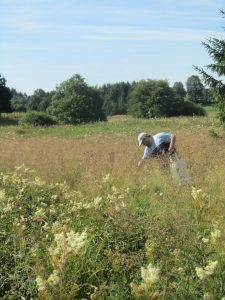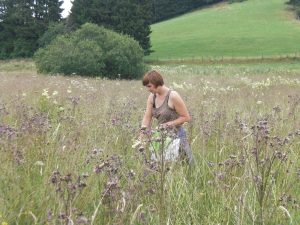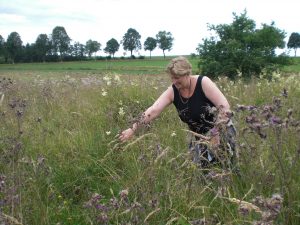30.09.2014
Entbuschungs- und Mäharbeiten auf der Cornelysmillen
Im Rahmen der C1-Aktionen werden auf dem größten zusammenhängenden Gebiet von natur&ëmwelt auf Cornelysmillen nördlich von Troisvierges in diesen Tagen ein grösseres Areal von 1,5 Hektar entbuscht, sowie 5 Hektar verbrachter Feuchtwiesen einer Pflegemahd unterzogen.
Für die Mahd dieser grösseren Fläche kommt ein spezielles Gerät zum Einsatz, ein umgebauter Pistenbully, der PB240D der Firma Meyer-Luhdorf (www.meyer-luhdorf.de). Mit dieser leichten, kettengetriebenen Mähraupe und dem einhergehenden verringerten Bodendruck, ist diese Maschine speziell geeignet zum Einsatz in Feuchtwiesen und anderen Naturschutzgebieten. Diese Massnahme wird durchgeführt um den Lebensraum unserer 3 Zielarten zu optimieren. Das Mahdgut wird gesammelt und in Zusammenarbeit mit einem lokalen Landwirt mit Mist vermischt, um Ende 2015 als Humusanreicherung im Ackerbau genutzt zu werden. 